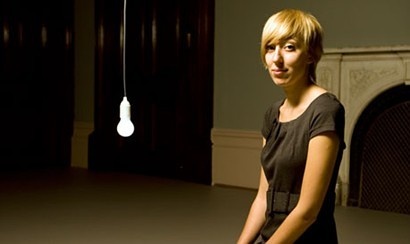|
Introduction of the artist:

Katie PATERSON (UK)
Born in 1981, Glasgow, UK. Lives and works in Berlin. Selected solo
exhibitions: 2012 Haunch of Venison, London / 2012 FOCUS, Modern Art Museum of
Fort Worth, USA / 2011 PKM Gallery, Seoul, Korea / 2008 Encounters: Katie
Paterson, Modern Art Oxford / Selected group exhibitions: 2012 Marking Time,
Museum of Contemporary Art, Sydney / 2011 Exposure: Matt Keegan, Katie Paterson,
Heather Rasmussen, The Art Institute of Chicago / 2011 Space. About a Dream,
Kunsthalle Wien / 2009 Life-forms, Bonniers Konsthall, Stockholm / 2009
Universal Code, The Power Plant, Toronto / 2009 Altermodern: Tate Triennial
2009, Tate Britain, London.
Introduction of works:
One of Beethoven’s most celebrated compositions, the Piano Sonata No. 14, was
originally entitled Sonata quasi una fantasia on its first edition of the score
in 1801. It later became commonly known as the Moonlight Sonata, a name derived
from the remarks of a German music critic and poet who likened the effect of the
first movement to that of “moonlight shining upon Lake Lucerne”. Also, in the
mid-nineteenth century, there arose a fable in which Beethoven was inspired by
moonlight coming in through a window, as he was improvising at the piano for the
fate of a blind girl that he met at the time.
E.M.E (Earth-Moon-Earth), or ‘moon-bounce’, is a form of radio transmission
whereby messages are sent in Morse code from earth, reflected from the surface
of the moon as a passive satellite, and then received back on earth. As part of
this operation, there are two major inherent challenges. First, the moon’s
distance from the earth of approximately 250,000 miles introduces lag time, so a
return signal from earth to the moon will not complete its travel until at least
5.4 seconds have elapsed. Secondly, the irregular surface of the moon acts as a
relatively poor reflector, resulting in only part of the information bouncing
back as some is ‘lost’ in its craters.
Through E.M.E, Katie Paterson translates the Moonlight Sonata into Morse
code, sending it to the moon for a return journey. The received fragmented piece
is then turned into a different score, where the gaps and absences becoming
intervals and rests. This new ‘naturally-altered’ music is performed by a
pianist at the Guangzhou Opera House and has been pressed onto a vinyl record to
be replayed. It is reminiscent of Beethoven’s Moonlight Sonata, but no longer
sounds the same, acting as a salute in the distance between the moon and earth,
and to the story handed down through the past two hundred
years.
| 
